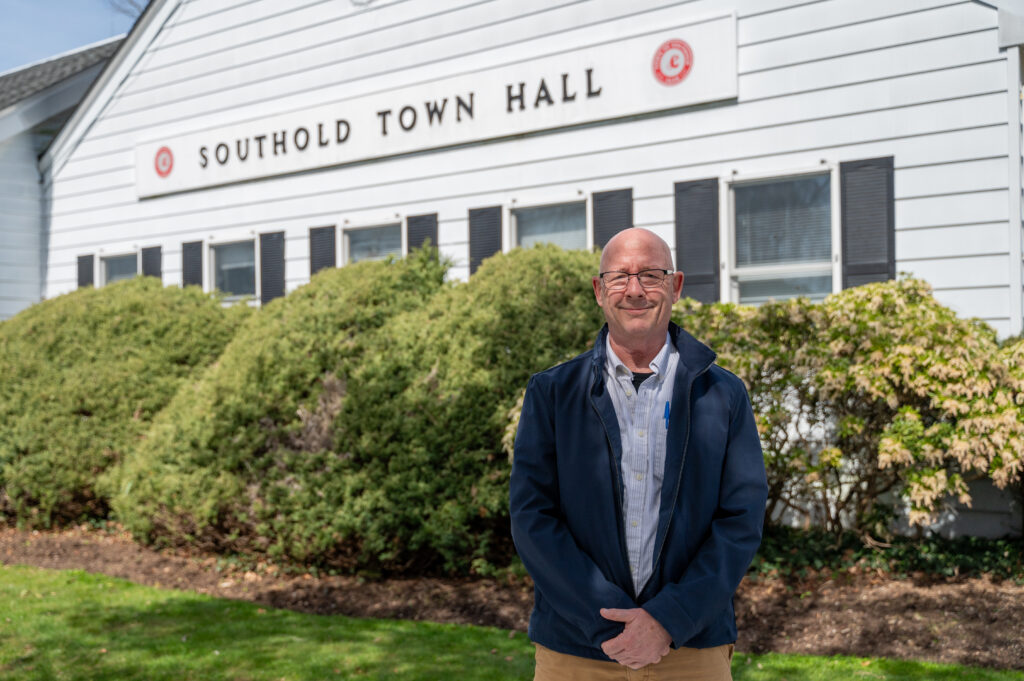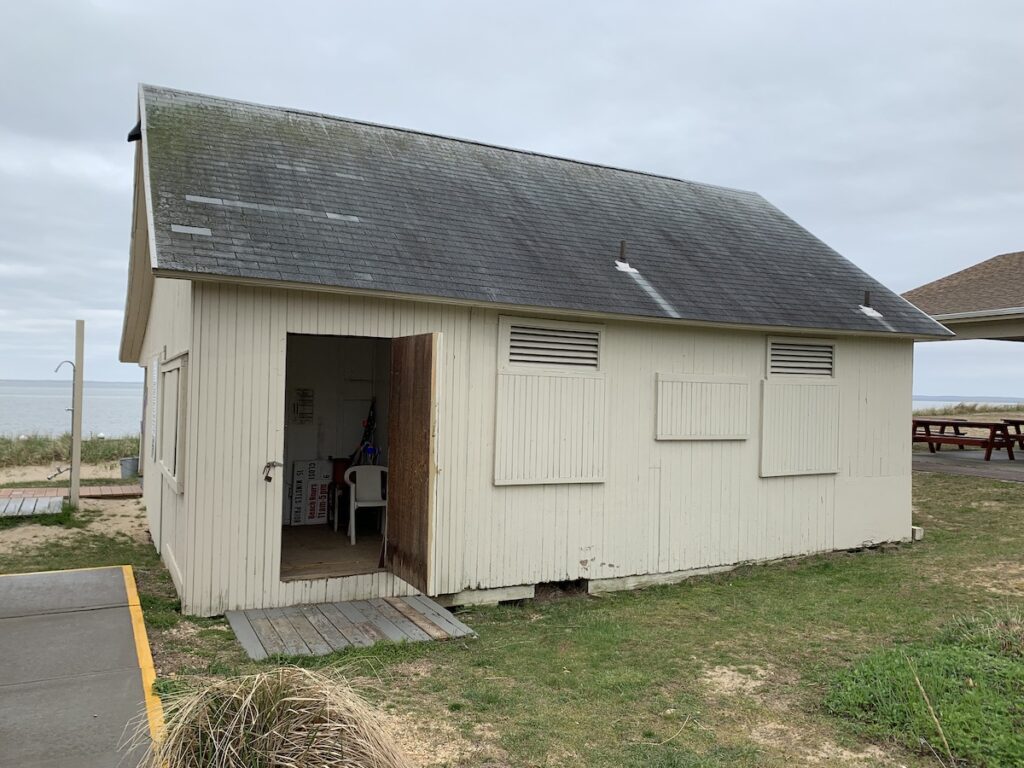Greenport Village Planning Board hears two hotel proposals

Last week, Greenport’s Planning Board heard about the first two commercial development projects proposed under the village’s new zoning codes — one for a new inn at the intersection of Front and Main streets and another for the expansion of the Greenporter hotel.
From last December through late October, a development moratorium was in place for much of downtown Greenport. That moratorium was lifted after a series of sweeping zoning changes was enacted by the Village Board.
The proposed projects are in the “pre-submission” stage— giving the developers an opportunity to get direct feedback from the Planning Board early in the process.
The Greenporter hotel is seeking approval for a significant expansion and renovation. The draft application seeks three key modifications: increasing the overall building size to 24,099 square feet from 15,042 square feet; increasing the number of rooms from 35 to 56, and expanding the restaurant from 45 to 65 seats.
As part of their proposal, the applicants want to conjoin the two buildings currently on the property and add a third floor to the new structure.
Planning Board chair Tricia Hammes described the Greenporter’s plans as “a significant application.”
“For purposes of the code, it will require both a conditional use approval from this board as well as site plan approval … it will also require certain variances from the Zoning Board of Appeals,” she said.
Dillon Prives, a member of the team that purchased the Greenporter a year ago, told the board that they propose to move parking lot space along Front Street to the western side of the property, bordering Fourth Avenue.
“The hope and intent is that it will create easier access and exit points and fluidity” for guests leaving or arriving at the hotel, Mr. Prives said.
Planning Board members expressed concerns about the size of the expansion and the plan to relocate the main parking lot.
“The Suffolk County bus comes back and forth several times a time [and] a lot of residents park on Fourth Avenue,” said board member Daniel Creedon, adding that it would be valuable to get input from the Southold police and the Greenport Fire Department.
Board member Elizabeth Talerman agreed, saying: “I am concerned with traffic on Fourth: prior accidents and bringing that kind of traffic into a residential area.”
She encouraged the Greenporter team to be creative in their expansion plans.
“I do have concerns about increasing the room size, increasing the restaurant [size] and the intensity of the use of space with very limited parking,” Ms. Talerman said. “And I appreciate that you’re looking into creative ways to solve that, and I encourage your creativity in solving that.”
Another board member wanted “to understand better what your plans are for the restaurant, and how much [of] the seating increase is outdoor versus indoors, and what the plan is in terms of entertainment or other activity at the restaurant.”
Mr. Prives said that over the course of this winter and spring the team’s intent is to “really assemble a formal [food & beverage] program, and open [the hotel restaurant] with a more substantial offering: with breakfast, lunch and dinner.”
As for entertainment, he said, “We don’t necessarily have everything locked in, [but] it’s by no means going to be dancing music. It’s a place where people come for a cocktail, after dinner [or] before dinner.
“Our guests are not here to party, per se,” he added.
The board also heard from applicants seeking to demolish the former site of Sweet Indulgences at 200 Main St., at the intersection of Front and Main, to make way for a new 18-room inn.
Under new village zoning codes, the inn would be required to dedicate a certain amount of its property to retail space, and the applicants said they envision gallery spaces on the Main Street-facing side of the building, with the hotel entrance on Carpenter Street.
Ms. Hammes told applicants Mark Boyle and Erik Warner that, to the extent it’s available, “we’d like any additional details you have as to the gallery storefront uses, hours, proposed guests, check in/checkout, loading procedures — including in respect to deliveries or drop offs — and what kind of instructions or directions you propose to give the guests with respect to arrival and offsite parking. And also your proposed method for dealing with refuse storage and disposal.”
Ms. Hammes also noted that the applicants — who also own the Harbor Front Inn on Front Street and the Sound View Greenport on County Road 48 —had previously indicated that they might be using guest amenities across their other nearby properties for “parking, swimming pools, staffing and the like.”
“If that is still the intent … we would want to know … whether or not you’re going to allow parking across the properties, whether or not you intend on a shuttle service and other operational interdependencies,” she said.
Mr. Boyle told the board at the outset that “we are not some big New York developer. We are not some hotel titan. We are a small group of friends and family who also believe in the future, the vision of Greenport.”
Mr. Warner was among critics of the village’s development moratorium.
Mr. Boyle noted that their new proposal for the site is more modest than the previous one. “Our inn that we had proposed was 25 rooms, with village appropriate exteriors [and] cozy rooms. And then the moratorium hit,” he said, adding, “I promise that will be the only time I mention that word. We have moved on.”
Mr. Boyle told the board that during the moratorium, his team met with Mayor Kevin Stuessi and “attended the village Vision [Greenport] meetings, the committee meetings, the Village Board meetings.”
He went on to list the new plan’s key components.
“Here are some of the highlights that are very different from our previous 25-room [hotel] and these are based on community feedback, comments from the Planning Board and their consultants from our 2022 submission … and the new zoning rules created by the village leadership.
“We’ve reduced the density for our hotel from 25 rooms to 18, a 28% reduction; created a minimum room size greater than the new 200 square foot rule; reduced the parking demand requirements due to it being a smaller inn; reoriented the lobby to the back of the building off Carpenter Street to lessen the perceived future traffic burden. We have reduced the size of the building and removed the third floor [and] revised the Main Street entrance to include retail per the updated code.
“I hope it is evident that … we have listened.”
Mr. Boyle also said the new proposal would need variances for the number of required parking spaces, basing the need for the variance on a traffic study his team commissioned in the summer of 2022.
“It indicates that our inn does not, and I repeat, does not increase traffic congestion. This is what the [study] engineers say — not Erik and not myself.”
The inn’s architect, Phil Giordano, told the board that the Main Street side of the building “seeks to embellish on some of the traditional details of our neighbors” and would feature a ground floor that is open and light and airy.”
He said the inn’s main entrance on Carpenter Street would be “meant to reflect the traditional shipbuilding character” of the waterfront.
Board members and audience members alike expressed concerns about the plan.
Board member Frances Walton questioned the conclusions of the parking study.
“I live not too far from the proposed site, so I have my own personal concerns in terms of congestion in the neighborhood. Even though your study says parking is not an issue. I personally believe that it is an issue.”
Civil engineer Matthew Aylward, whose firm conducted the traffic study, told officials that with only three parking spots on site, “we believe the solution … is to direct the customers that are going to be staying here to the [Long Island] railroad parking lot.”
He said the team was also considering a shuttle service for guests.
Echoing the comments of her fellow board members, Ms. Walton said she remained concerned about the size of the proposed building.
“While I appreciate — very much appreciate — the fact that you have brought that [size] down, it still is a massive project, from my perspective, at that particular location. The [parking] lot coverage variance that you’re looking for is certainly evidence in part of that.”
Ms. Hammes said the intersection of Main and Front Streets is a chaotic one.
“I view that intersection as one of the busiest and most hectic intersections in the community. I’m down there a lot — all times of year — and I constantly see near fender-benders, people almost getting hit, people in the summertime not being able to cross the street, cars not being able to turn.”
Mr. Creedon said he anticipated the need for an independent engineering firm to study area traffic.
“I’m looking forward to a third-party professional determination [about traffic and impacts], rather than one that you have provided,” he said. Mr. Boyle said his team hired experts to run an analysis “of taking out a fire truck and making sure there was complete access around it … we believe we’ve taken care of it.”








